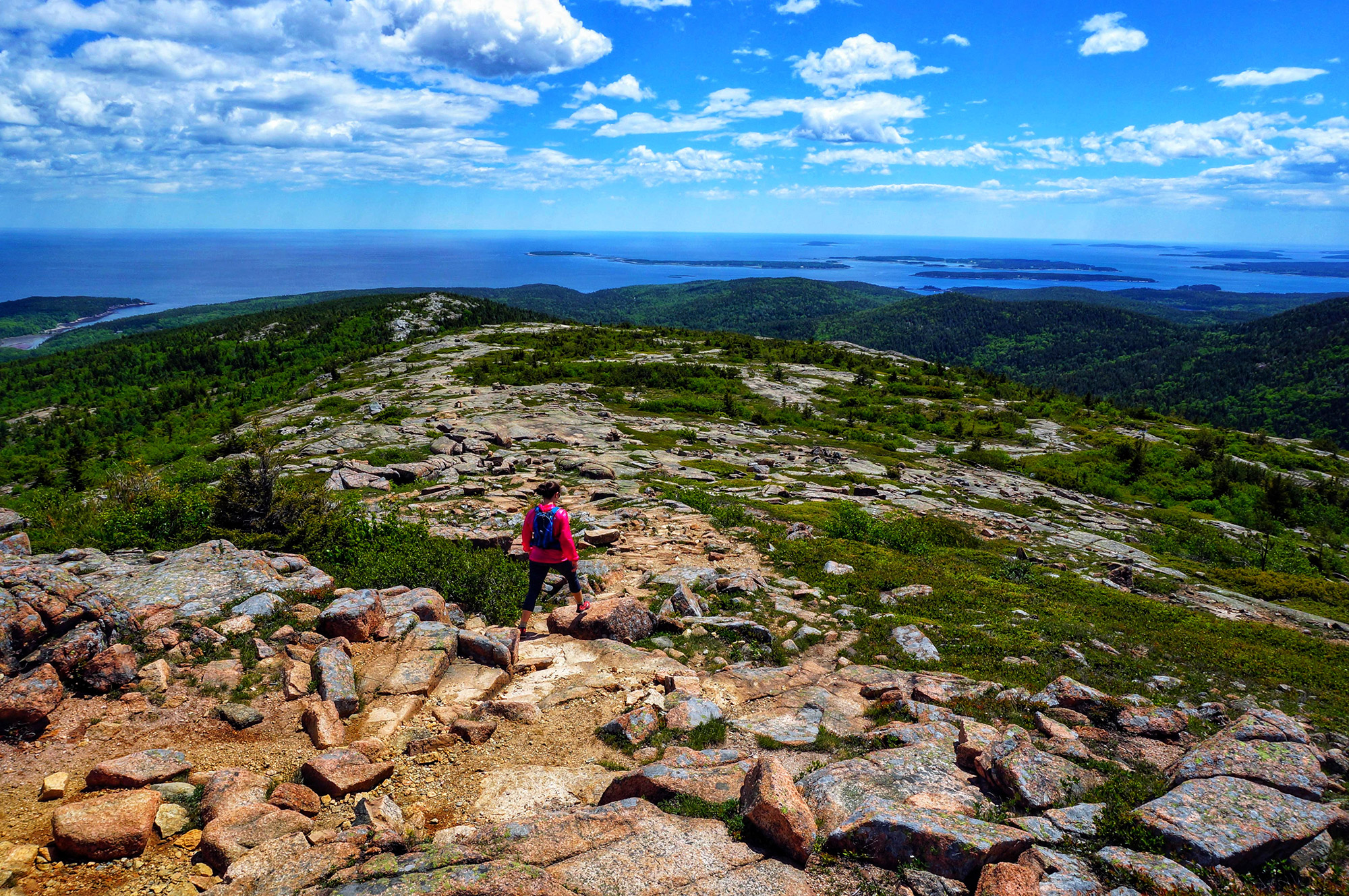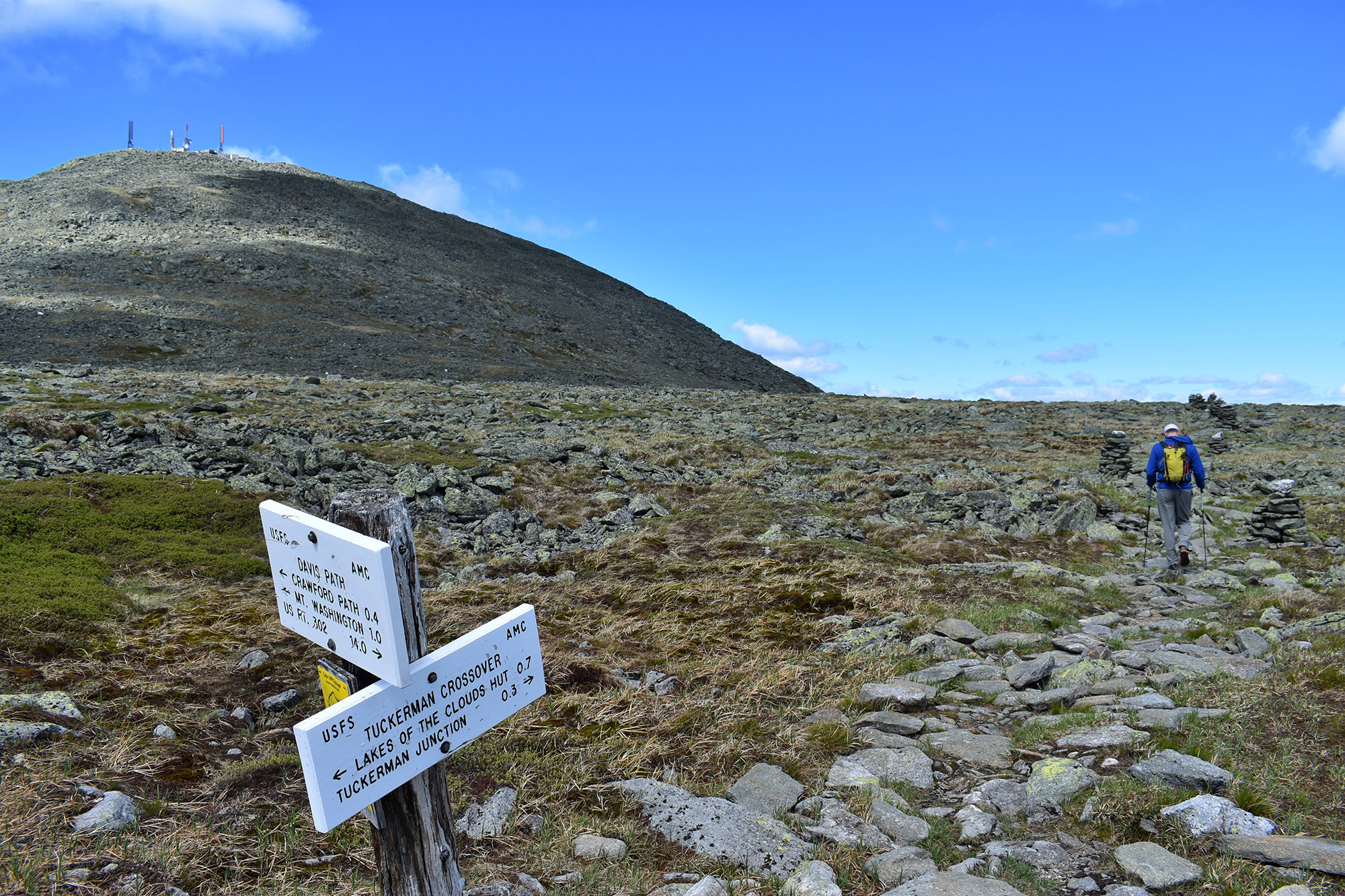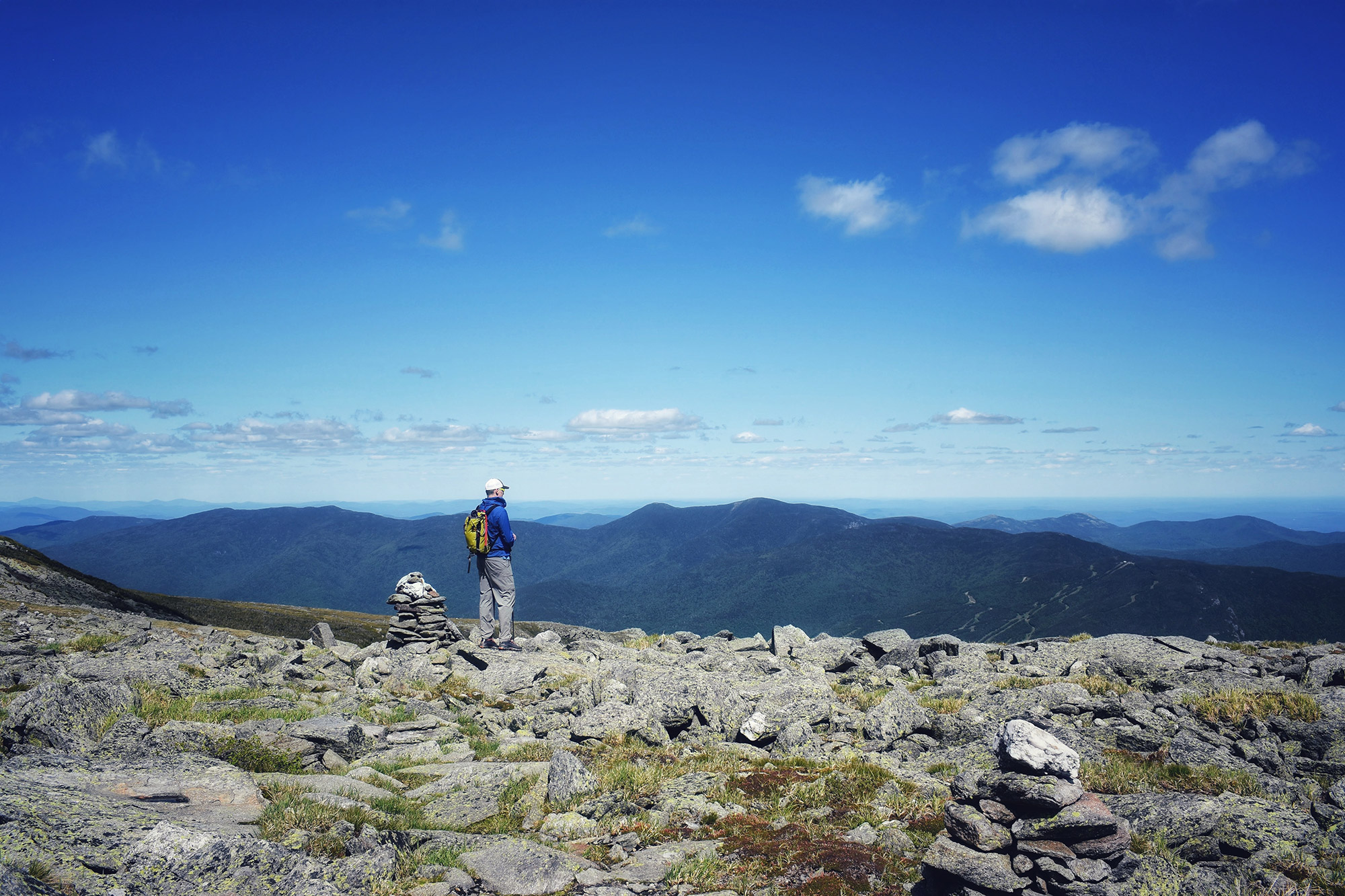Whether you’re pursuing Vermont’s tallest peaks, tackling classic hikes such as the Presidential Traverse, or looking to bag a popular summit like Mount Monadnock, having the right gear is critical for success, safety, and comfort in the mountains. If you’re starting to pull together your peakbagging kit for the summer, here are some tried-and-true pieces to take with you into the mountains.

Pack: Osprey Talon 22
If you take too big of a pack into the mountains, you’re liable to overpack. By contrast, if you bring too small a pack, you might be forced to leave an essential item behind. For just the right balance, try a pack like the Osprey Talon 22. The panel-loading Talon 22 has all of the features you need for moving through the mountains, and none of the features you don’t—helping keep it airy enough for the “light is right” crowd but durable enough to stand up to a big day in the Carter Range.
Hydration Bladder: CamelBak Crux 2L Reservoir
A key to moving fast in the mountains is minimizing stopping, and by allowing hikers to drink on the move, hydration bladders put an end to time-consuming water breaks. The Black Diamond Speed Zip 24 is hydration compatible, meaning a bladder like the 2-liter CamelBak Crux, will slide right into it. CamelBak has been making bladders since the beginning—they’re easy to drink from, simple to fill, and require minimal effort to fill.
Hiking Poles: Leki Micro Vario Core-Teck
Improved hiking efficiency, reduced wear and tear on joints, and increased safety are just a few reasons why you should hike with trekking poles. Trekking poles like the Leki Micro Vario Core-Tec (men’s/women’s) collapse small enough to tuck away inside/are easily stowed on the outside of a pack when not in use, are adjustable for adapting to a variety of terrain, have interchangeable baskets (making them appropriate for four-season use), and are sturdy enough to stand up to rugged Northeast terrain.

Headlamp: Petzl Tikka
Even if you’re just going for a short trip up a state highpoint like Massachusetts’ Mount Greylock, it’s a good idea to carry a headlamp. A headlamp can save you from epicing in the dark if a trip takes longer than anticipated and can be used to signal for help in an emergency. The Petzl Tikka is powerful with a maximum of 200 lumens and has been a standout of Petzl’s headlamp line for years.
Sunglasses: Julbo
Whether you’re trying to complete the Adirondacks’ 46 peaks over 4,000 feet or New Hampshire’s 52 with a View, odds are you’ll be spending some time above treeline and in the sun—making sunglasses a good addition to your hiking kit. With options to fit all types of faces and a wide variety of styles, the “right” pair differs between individuals. That said, we love Julbo shades (the crazier the color scheme, the better). Look for something polarized and get a hard case to protect them in your pack.
Puffy: EMS Alpine Ascender
It’s easy to be lulled into complacency by mild spring and summer weather at the trailhead, but be advised that it could still feel like winter at higher elevations—for example, the record high temperature on New Hampshire’s Mount Washington is just 72 degrees. Because of this, it’s a good idea to always pack a puffy coat. The EMS Alpine Ascender delivers the warmth needed for frigid peaks and frosty ridgelines while still being breathable enough to wear on the move.
Hardshell: Outdoor Research Helium II
Mark Twain famously said, “If you don’t like the weather in New England now, just wait a few minutes.” With that in mind, pack a hardshell to deal with the Northeast’s fickle weather. The Outdoor Research Helium II (men’s/women’s) is a long-time favorite for summer conditions due to its lightweight packability and weather protection (which was essential as we explored Camel’s Hump, a Vermont classic).

Windshirt: Black Diamond Alpine Start
Probably the layer that gets used the most, a windshirt is perfect for everything from taking the chill off of early morning starts to keeping you warm when the wind is whipping above treeline. The Black Diamond Alpine Start (men’s/women’s) is light and packable enough that it never gets left behind and has proven itself capable of standing up against the region’s coarse rock that would shred lesser jackets.
Sunshirt: Black Diamond Alpenglow Sun Hoody
Sunshirts are an integral part of any peakbagger’s kit, especially when above treeline—on Cadillac Mountain’s South Ridge Trail, for example—as they offer protection from the sun, help keep hikers cool, and efficiently wick sweat away from the body. A nice bonus of sunshirts is that they also offer protection from bugs, making them a particularly well-loved piece during the Northeast’s seemingly interminable black fly season. The Black Diamond Alpenglow Sun Hoody (men’s/women’s) delivers 50-UPF protection and features a hood to help keep the sun off your head, neck, and face.
Trail Runners: Salomon Speedcross
Moving fast is essential to picking off multiple peaks in a day on hikes like the infamous Pemi Traverse. Not only is the old saying “a pound off your feet equals five pounds off your back” true, but heavy footwear affects hikers in other ways too. For example, the stiff and less responsive nature of heavier footwear reduces the body’s efficiency—resulting in 5% more energy expended. Shoes are an incredibly personal decision, but in the past, we’ve had luck with the Salomon Speedcross (men’s/women’s). The Speedcross delivers superb traction in a variety of terrains, lightweight, and enough cushion for comfort even the longest days in the mountains. Pair them with Smartwool’s PhD Pro Light Crew Socks (men’s/women’s) for a fantastic fit and smooth stride.
Pants: Outdoor Research Ferrosi Pant
If you haven’t tried the Outdoor Research Ferrosi Pant (men’s/women’s) yet, you’re missing out. Perfect for all but the warmest days, these are staple of our summer peakbagging kits. If you run warm, the Ferrosi Short (men’s/women’s) is awesome, too.

Other Essentials
It’s always a good idea to stash a first aid kit, emergency bivy, map and compass, hat (men’s/women’s) and gloves or mittens (men’s/women’s)— yes, even in the summer, communication device, fire starter, and some extra food in your pack as well. While we hope you never need any of it, it’s nice to be prepared in an emergency.
Do you have a key piece of peakbagging gear that didn’t make our list? If so, let us know what it is and why you don’t hit the trail without it in the comments below.
Tim Peck and Doug Martland
Tim and Doug met long ago at the Eastern Mountain Sports in Canton, Massachusetts. Bonding over a love of slick Quincy Quarry granite, White Mountain sufferfests, and scheming up adventures while folding tee-shirts, today Tim and Doug collaborate to write about their favorite outdoor activities and occasionally get nostalgic about tee-shirt tables.




